Chapter 39.16
RURAL RESOURCES
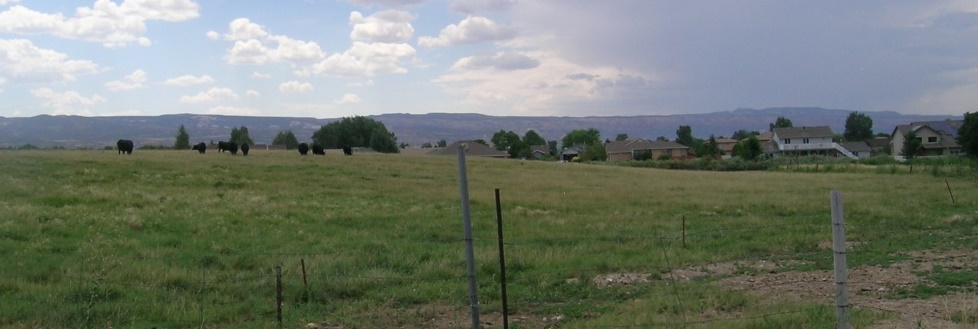
Sections:
39.16.020 Future urban growth in rural areas.
39.16.030 Upper Grand Valley Pest Control District.
39.16.050 Orchard Mesa Sub-Area Concept Plan – 2008.
39.16.060 Mesa County Rural Master Plan goals and policies – Agriculture (AG).
39.16.070 Orchard Mesa rural resources.
39.16.010 Background.
Orchard Mesa’s agricultural businesses contribute significantly to the local economy and provide a food source for the citizens of the Grand Valley and beyond. A local food supply improves health and reduces costs for the general population. Agricultural uses on Orchard Mesa include on-farm residences, orchards, row crops, and pasture. The topography and soils of this area lend themselves well to irrigation and are considered among the best soils in the Grand Valley for crop production. Nearly all the irrigable lands below the Orchard Mesa Irrigation Canals are or have been cultivated for a variety of crops, most notably peaches, apples, cherries, grapes, other fruits, and vegetables. Nearly all undeveloped irrigated land in Orchard Mesa is considered prime irrigated farmland and other areas are considered unique by the U.S. Soil Conservation Service.
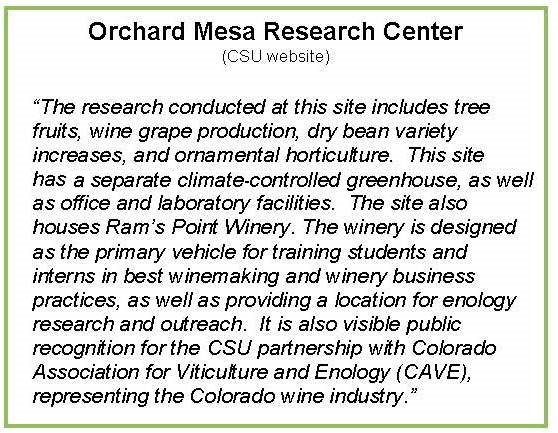
The Colorado State University’s Agricultural Experiment Station includes the Western Colorado Research Center, part of a network of seven research centers (nine sites) throughout the State. The Orchard Mesa site is located at 3168 B 1/2 Road on about 76 acres.
Mesa County’s “Right to Farm and Ranch Policy,” and Agricultural Forestry Transitional (AFT) zoning provides for agricultural operations. AFT zoning also allows subdivisions up to an average of one dwelling per five acres and generally permits lot sizes to be as small as one acre. Several voluntary land conservation tools are available to landowners who are interested in protecting agricultural properties and open space, including the Orchard Mesa Open Lands Overlay District (an incentive-based option for subdivision of land east of 31 Road; Appendix Map 8).

In 2011, the Palisade Wine and Fruit Byway was established to encourage agritourism. The Byway includes signage and kiosks directing bicyclists and motorists touring the orchards and wineries of Orchard Mesa along a 25-mile loop route starting at 32 and C Roads.
(Ord. 4629, 5-7-14)
39.16.020 Future urban growth in rural areas.
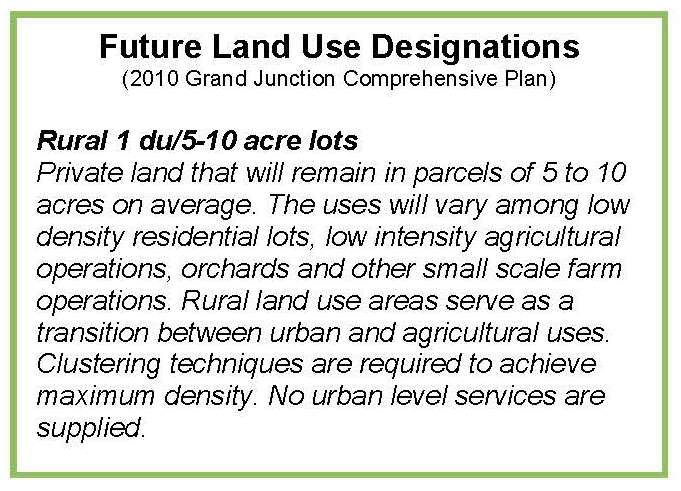
In 2008, the Persigo 201 sewer service boundary was expanded from 30 Road to 31 Road for the area north of A 1/2 Road by the Persigo Board (Mesa County Board of County Commissioners and the Grand Junction City Council). This decision reduced the area designated as “Rural” future land use on Orchard Mesa by one and one-half square miles. While there are many properties within the Urban Development Boundary that continue to have rural uses and densities, the area will gradually transition to urban development. (Appendix Map 4)
Orchard Mesa includes two centers in the Comprehensive Plan. An existing neighborhood center is located in the vicinity of B 1/2 Road at Highway 50, in the urbanized area. A future village center is envisioned sometime after the year 2020 along Highway 50 between 30 Road and the intersection with Highway 141. While currently rural, the area is expected to become more urban as the area grows and services are extended. A mix of uses is planned for the village center including commercial, retail, office and residences. Development densities are highest near the village center mixed-use area and decrease with distance from the center.
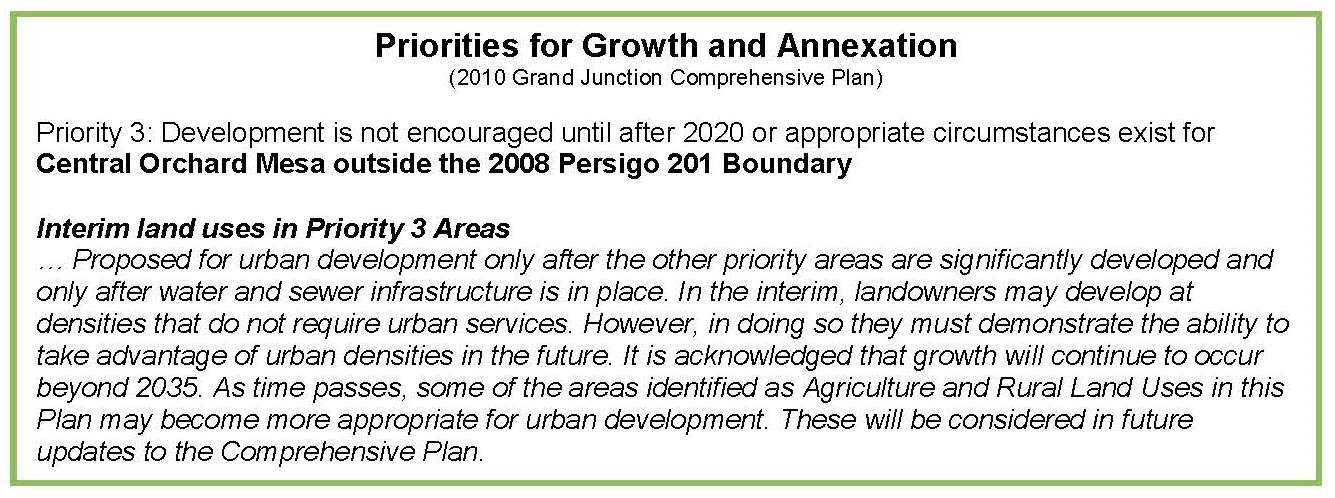
Although a sewer trunk line was installed along 32 Road (Highway 141) in 2011 connecting the community of Whitewater to the Clifton Sanitation District’s treatment plant, the 2010 Comprehensive Plan designates the majority of the corridor as Rural. Some urban development is appropriate along this corridor consistent with the Comprehensive Plan and existing zoning, i.e., in Springfield Estates and Valle Vista subdivision.
(Ord. 4629, 5-7-14)
39.16.030 Upper Grand Valley Pest Control District.
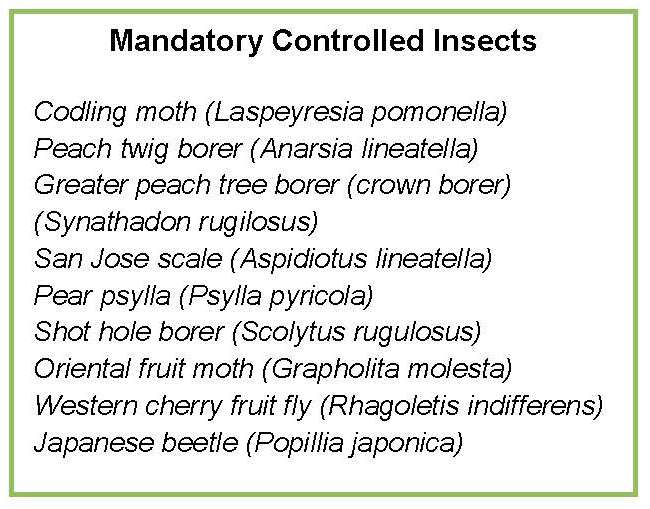
Backyard fruit trees are often the source of insect and disease pests. Landowners within the Upper Grand Valley Pest Control District (UGVPCD) are required by State law to control pests on fruit trees (§ 35-5, C.R.S.). The UGVPCD includes portions of Orchard Mesa generally east of 30 Road. The purpose of the district is to protect commercial growers from pest and weed infestations. The Mesa County Weed and Pest Coordinator enforces the law, inspects nursery stock, educates the public, and identifies and manages weed infestations.
(Ord. 4629, 5-7-14)
39.16.040 Weed management.
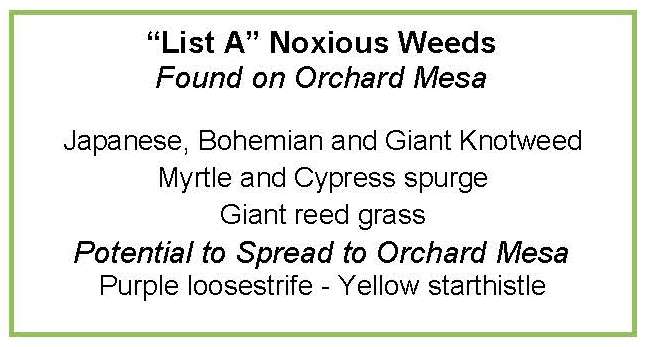 Weed management is a concern at the local, county, regional and State levels. By law (the Colorado Weed Management Act), noxious weeds require control. As of 2013, there are 19 weeds on the Mesa County Noxious Weed list that are being controlled or managed by policies set forth in the Mesa County Weed Management Plan. Weed species on List A must be eradicated wherever found in order to protect neighboring communities and the State as a whole.
Weed management is a concern at the local, county, regional and State levels. By law (the Colorado Weed Management Act), noxious weeds require control. As of 2013, there are 19 weeds on the Mesa County Noxious Weed list that are being controlled or managed by policies set forth in the Mesa County Weed Management Plan. Weed species on List A must be eradicated wherever found in order to protect neighboring communities and the State as a whole.
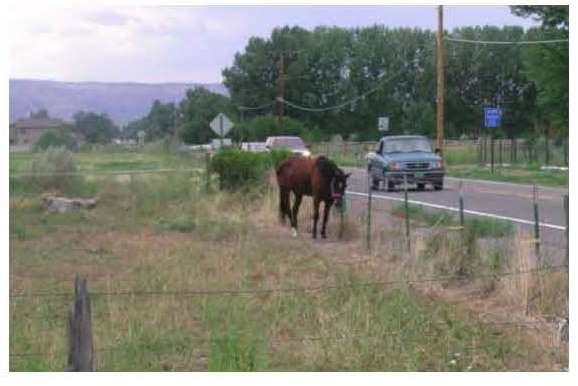 Mesa County conducts roadside spraying. Some common weeds that are not listed as noxious are commonly controlled during roadside weed spraying. Residents can opt out of roadside spraying but must notify the Weed and Pest Coordinator, mark their property, and control the weeds themselves. Mesa County does not control overgrown weeds in residential areas, mow weeds on private property, or offer cost share.
Mesa County conducts roadside spraying. Some common weeds that are not listed as noxious are commonly controlled during roadside weed spraying. Residents can opt out of roadside spraying but must notify the Weed and Pest Coordinator, mark their property, and control the weeds themselves. Mesa County does not control overgrown weeds in residential areas, mow weeds on private property, or offer cost share.
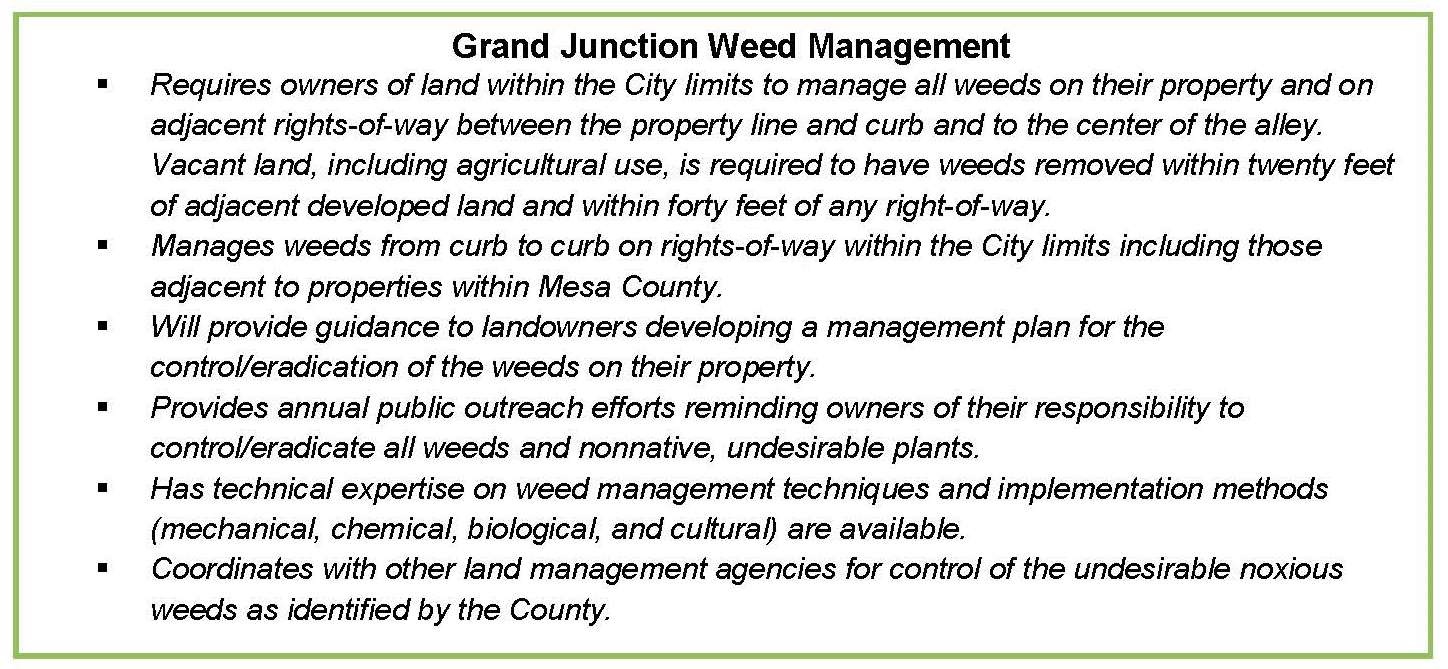
(Ord. 4629, 5-7-14)
39.16.050 Orchard Mesa Sub-Area Concept Plan – 2008.
(A sub-area study conducted as part of the 2010 Comprehensive Plan)
The desire to preserve prime agriculture was the prominent sentiment expressed by residents of Central Orchard Mesa. In addition, future urban growth of high intensity/density is to be located adjacent to Highway 50. Other priorities included:
(a) Preserve the river corridor as open land.
(b) Develop trails.
(c) Support cottage industries over other commercial and industrial land uses in the area.
(d) Preserve orchards and vineyards.
(Ord. 4629, 5-7-14)
39.16.060 Mesa County Rural Master Plan goals and policies – Agriculture (AG).
(a) AG Goal 1: Conservation of agricultural and range lands capable of productive use.
(b) Policies.
(1) AG1.1. Locate new development on land least suitable for productive agricultural use.
(2) AG1.2. Clustering of dwellings is encouraged on a portion of the site where the remainder is reserved for open space or agricultural land.
(3) AG1.3. Buffering of new development is required adjacent to agricultural operations.
(4) AG1.4. Enhance methods of communicating the right-to-farm/ranch policy and provisions to educate nonfarm/nonranch users on the characteristics of an agricultural economy (e.g., noise, spraying, dust, traffic, etc.).
(5) AG1.5. Require consultation with the appropriate land and resource manager and area residents to minimize and mitigate conflicts new development proposals may create between wildlife and agricultural uses.
(6) AG1.6. Agricultural production practices will be honored and protected when development is allowed adjacent to or near productive agricultural lands.
(7) AG1.7. Development will not be allowed to interfere with irrigation water used for agricultural production. Delivery of full water rights to farmland using irrigation water shall be guaranteed by the developers and/or subsequent homeowners association through a proper delivery system. Historic irrigation easements shall be respected and formalized or conserved.
(8) AG1.8. Support farmers’ markets and promote the purchase of local goods.
(9) AG1.9. Support and promote voluntary techniques to preserve agricultural lands.
(10) AG1.10. Promote multiple/compatible uses of agricultural lands.
(11) AG1.11. Provide a streamlined process that allows limited creation of small parcels from larger bona fide lands in agricultural production to assist agricultural operations to remain viable.
(Ord. 4629, 5-7-14)
39.16.070 Orchard Mesa rural resources.
(a) Goal 1. Rural land uses east of 31 Road are maintained, consistent with the Comprehensive Plan Future Land Use Map.
(1) Actions.
(i) Maintain the Comprehensive Plan’s Future Land Use designations and support zoning that implements it.
(ii) Support and sponsor community forums to identify and implement ways to incentivize local food production.
(iii) Support voluntary land conservation techniques for agricultural properties.
(b) Goal 2. The 32 Road corridor (Highway 141) retains its rural character.
(1) Actions.
(i) Allow development on nonresidentially zoned land and permitted nonresidential uses in a manner consistent with the rural character of surrounding properties.
(ii) Identify and protect important view sheds along the corridor.
(c) Goal 3. Agricultural businesses are viable and an important part of Orchard Mesa’s economy.
(1) Actions.
(i) Help promote the Fruit and Wine Byway.
(ii) Support the CSU Research Center to improve agricultural production and sustainability for local farmers.
(iii) Identify and permit appropriate areas for farmers’ markets throughout the growing season.
(iv) Coordinate public outreach on noxious weed control, e.g., public forums with Mesa County Weed and Pest Control staff and the Mesa County Weed Board.
(Ord. 4629, 5-7-14)


